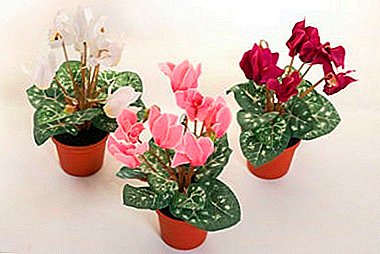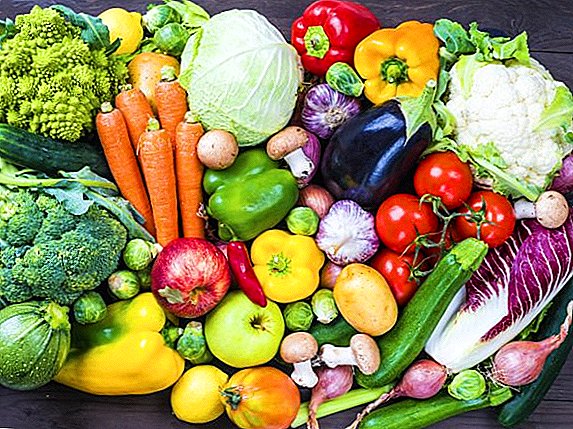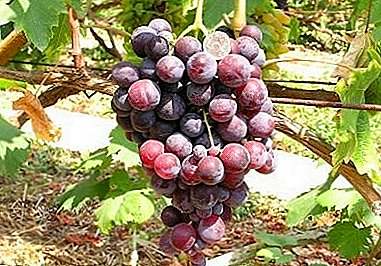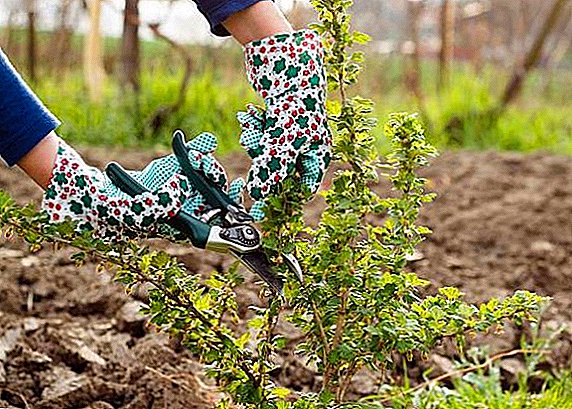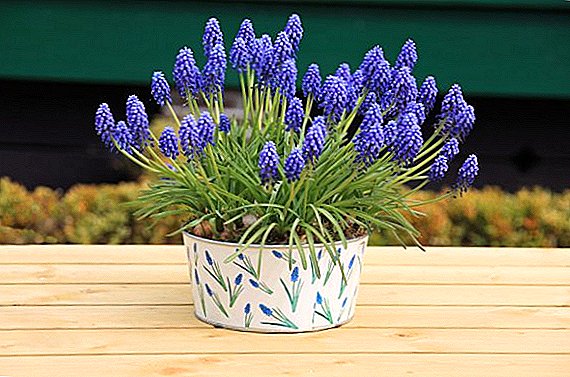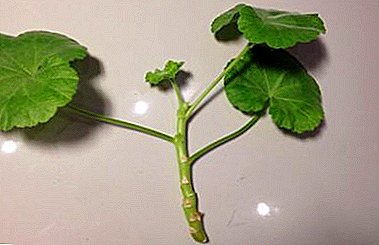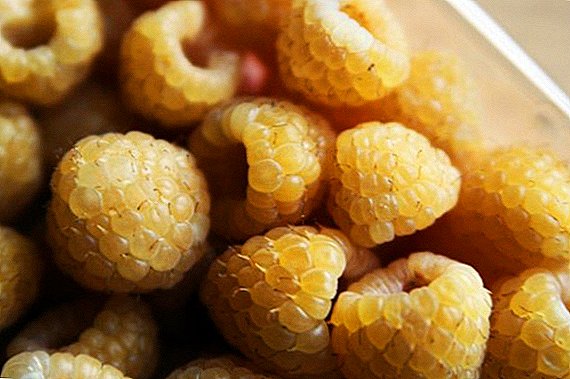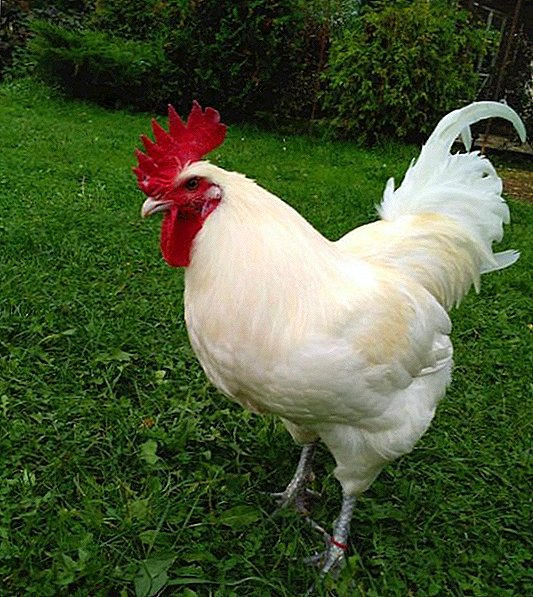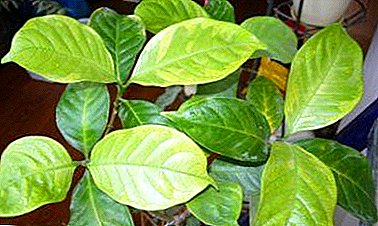
Gardenia pretentious enough to care. The list of ailments that can overcome a flower is quite extensive. Knowing the possible causes of their occurrence, it is always easier to carry out preventive measures. Indeed, despite the fact that the care of a tropical beauty will have to be patted, she fully compensates for this with her truly luxurious look.
Why does the gardenia turn yellow, blacken and fall leaves and how to deal with it? Consider further in the article.
Foliage structure
Gardenia leaves are bare, leathery, dense, elongated-ovoid, slightly narrowed in shape, glossy, dark green in color with a characteristic pattern along the veins. Grow in a pair.
Foliage, like other parts of gardenia, is quite gentle and demanding to care.
Leaf plates turn yellow
Why?
- Wrong watering mode. The soil dries or is regularly moistened with excess fluid. Not suitable water quality.
- Incorrectly selected soil. Gardenia prefers acidic soil, in the rest it will feel uncomfortable, alkaline and neutral substrates prevent the assimilation of necessary substances.
- Chlorosis resulting from alkalization of the soil.
- Lack of lighting.
- Lack of nutrition.
- The defeat of the shield.
- An overabundance of chlorine and lime in the soil.
Diagnostics
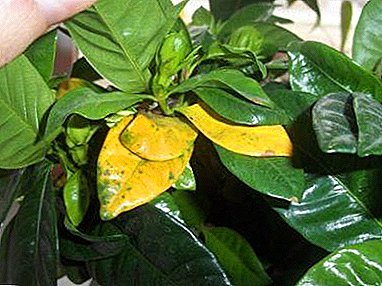 The leaf plate turns yellow completely or just between the veins.
The leaf plate turns yellow completely or just between the veins.- The plant languishes, leaves turn yellow and fall.
- The leaves are lightening, gradually leaving a yellow tone, the tips of the leaf plates are intensely yellow, and the veins remain green, and white spots may appear on the leaves.
- The leaves turn pale evenly on all branches of the bush, gradually acquiring a yellow tint.
- Leaves become pale, gradually turning yellow.
- The leaves turn yellow, and brown spots appear on the back, which are easy to remove.
- Yellow leaves on the top of the bush.
What to do?
- Watering gardenia should be immediately after drying the soil on one or two phalanxes of the finger, depending on the size of the plant and the capacity in which it is planted. You can not wait for complete drying of earthy coma. For irrigation, use only warm, well-settled, boiled or filtered water.
- It is necessary to transplant the gardenia in a specially created for her soil. You can buy it in flower shops. Also suitable for azalea substrate. For additional acidification, you can independently mix conifer needles into the substrate.
So that over time there is no change in the reaction of the soil, it should be watered with acidified water every ten days. To prepare such a solution, you can use citric or oxalic acid or lemon juice.
- Conduct watering and spraying gardenia iron-containing preparations.
- The flower should be placed on the windowsill from the east or west side, so that the amount of light is sufficient, but there is no risk of burns from direct sunlight.
- In the period of growth and flowering gardenia needs feeding. It is necessary to pick up a complex fertilizer with additional magnesium content.
- In the initial stages of the disease, the plant can be helped by treating it with a swab dipped in alcohol. If the damage is extensive, insecticides should be used.
- Requires urgent transfer to a new ground.
Blacken
The reasons
- Excessive waterlogging.
- Frostbite and draft.
- Spider mite
- Root rot due to fungal infections.
- Cramped pot.
Diagnostics
- At a plant tips of leaves or a sheet plate entirely blacken.
- The sheet plate is blackened and slightly curled.
- The leaves turn black gradually, as the insect sucks the juice out of them.
- On the leaves there is a black soot film.
- The leaves turn black at the base, and the roots tightly twist around the earthen room and are adjacent to the walls of the pot.
How to treat?
 It is necessary to dry the soil and adjust the watering. Make drainage holes in the pot if they are missing.
It is necessary to dry the soil and adjust the watering. Make drainage holes in the pot if they are missing.- Do not allow sudden changes in temperature. The optimal frame + 18 + 24 degrees.
- The pest attacks a plant placed in a condition of dry air and heat. It is necessary to adjust the mode of maintenance of gardenia and treat the flower with insecticides.
- In order to assess the real state of the roots, you need to remove the flower from the pot and inspect them. Healthy roots are white, rotted - brown. All affected parts of the root system need to be cut, sprinkle the cut areas with crushed wood or activated charcoal and plant in a smaller pot if the previous capacity was too spacious and caused stagnant moisture, which is a beneficial condition for the reproduction of fungi.
- Plants will help transplant method of transshipment.
Green mass falls and other diseases
Gardenia leaves may fall off. If they fall without changing, then this indicates excessive overdrying of the soil. Leaves can also be dumped due to the fact that the plant has been exposed to drafts.
Important! No mass dumping of leaves for gardenia is a natural process.
The plant can drop buds because the air in the room is too dry, it is exposed to drafts or cold, is stressed by temperature fluctuations or when the pot is often turned relative to the light source.
The appearance of brown and brown spots on the flowers indicates that they got water during spraying or watering.
Too heavy and compacted soil can destroy the root system. plants, it is necessary to transplant it.
Gardenia is prone to mealybug attack, the symptom is the appearance of white spots on the back of the plant. To get rid of insects, the plant should be washed in the shower, wipe all the leaves with a soap solution and treat with an insecticide, and you should not neglect repeated processing, since insect colonies are numerous, and their larvae and eggs are difficult to remove from the folds and sinuses of leaves and flowers, therefore, to destroy they will not work the first time.
Gardenia refers to home plants that require close attention and careful maintenance. Non-compliance with light and temperature conditions, as well as improperly organized watering can lead to disease and death of a flower. But if you know about the possible problems and understand the symptoms, you can always have time to provide the exotic beauty with timely saving assistance.


 The leaf plate turns yellow completely or just between the veins.
The leaf plate turns yellow completely or just between the veins. It is necessary to dry the soil and adjust the watering. Make drainage holes in the pot if they are missing.
It is necessary to dry the soil and adjust the watering. Make drainage holes in the pot if they are missing.